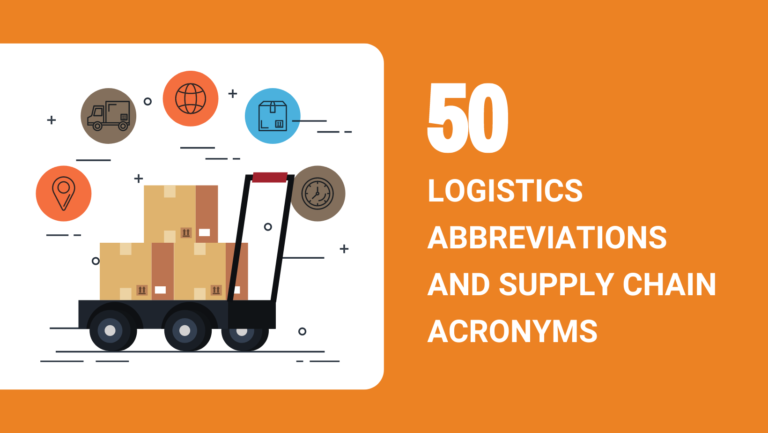Logistics describes the entire process from product sourcing to inventory storage, fulfillment, and transportation. So, learning the most common logistics abbreviations and acronyms will be helpful when dealing with the backend operations of your business.
However, with so many advanced areas of logistics and technology, how to keep track and isolate the logistics acronyms that are essential vs. those that are unnecessary?
With our help, of course! We’ve gathered 50 crucial logistics abbreviations that any modern entrepreneur needs to learn.
Let’s jump right ahead!
Logistics Abbreviations: Table Representation
First, let’s look at a summary of all 50 abbreviations in a table so that you can memorize them and refer to them easily:
| # | Full Logistics Term | Abbreviation |
| 1 | Supply Chain Management | SCM |
| 2 | Third-Party Logistics | 3PLs |
| 3 | Fourth-Party Logistics | 4PLs |
| 4 | Manufacturing Resource Planning | MRP |
| 5 | Stock Keeping Unit | SKU |
| 6 | Universal Product Code | UPC |
| 7 | European Article Number | EAN |
| 8 | Bill Of Lading | BOL |
| 9 | Bill Of Materials | BOM |
| 10 | Warehouse Management System | WMS |
| 11 | Original Equipment Manufacturing | OEM |
| 12 | Original Design Manufacturing | ODM |
| 13 | Key Performance Indicator | KPI |
| 14 | Application Programming Interface | API |
| 15 | Full Container Load | FCL |
| 16 | Less than a Container Load | LCL |
| 17 | Full Truckload | FTL |
| 18 | Less than a Truckload | LTL |
| 19 | Cost, Insurance, and Freight | CIF |
| 20 | Free On Board | FOB |
| 21 | Ex Works | EXW |
| 22 | Delivered Duty Paid | DDP |
| 23 | Delivered Duty Unpaid | DDU |
| 24 | Value Added Tax | VAT |
| 25 | Business To Business | B2B |
| 26 | Business To Customer | B2C |
| 27 | Direct To Consumer | DTC |
| 28 | Consumer Packaged Goods | CPG |
| 29 | Assembled To Order | ATO |
| 30 | Minimum Order Quantity | MOQ |
| 31 | Proof Of Delivery | POD |
| 32 | Port Of Entry | POE |
| 33 | Point Of Sale | POS |
| 34 | Customer Relationship Management | CRM |
| 35 | Cost Of Goods Sold | COGS |
| 36 | Estimated Time of Arrival | ETA |
| 37 | Estimated Time of Departure | ETD |
| 38 | Standard Operating Procedure | SOP |
| 39 | Radio Frequency Identification | RFID |
| 40 | Enterprise Resource Planning | ERP |
| 41 | Electronic Data Interchange | EDI |
| 42 | Cash On Delivery | COD |
| 43 | Air Waybill | AWB |
| 44 | Harmonized Tariff Schedule | HTS |
| 45 | International Organization for Standardization | ISO |
| 46 | Return On Investment | ROI |
| 47 | Transportation Management System | TMS |
| 48 | Cubic Meter | CBM |
| 49 | Fulfilled By Amazon | FBA |
| 50 | Fulfilled By Merchant | FBM |
Logistics Abbreviations: List
Now, let’s shortly explain what each of these logistics abbreviations means so that it’s easier for you to implement and practice these concepts in your day-to-day business.
1. Supply Chain Management – SCM
Supply Chain Management or SCM describes the entire logistics operations process, from sourcing raw materials, manufacturing, storage, and packaging to end delivery to your buyers.
2. Third-Party Logistics – 3PLs
3PLs are third-party businesses that you can use to outsource parts of your logistics or supply chain management process.
For instance, you might decide to deal with inventory storage or transportation on your own, or outsource this to an all-around 3PL.
3. Fourth-Party Logistics – 4PLs
A 4PL or a “Fourth-Party Logistics” provider is similar to 3PLs, only they take over the entire supply chain management, leaving business owners time to focus on more important business decisions.

4. Manufacturing Resource Planning – MRP
The abbreviation MRP can stand for “Manufacturing Resource Planning” or “Material Requirements Planning”. In simple terms, this is software that helps businesses with inventory and supply management.
MRP software is typically used by businesses with a manufacturing capacity to help them plan the supply, production, and inventory requirements.
5. Stock Keeping Unit – SKU
SKU is an abbreviation that stands for “Stock Keeping Unit”, and it refers to a code that sellers use to identify each product in their inventory. SKUs are used for internal organization and tracking.
The SKU code is usually a set of numbers and letters (alphanumeric) and each unique product type or unit has its own SKU.
6. Universal Product Code – UPC
UPC is an abbreviation for “Universal Product Code” and it represents a 12-digit code that’s assigned to a product used to move it through the supply chain. UPCs are used throughout the USA and Canada.
Unlike the SKU code which is for internal use, the UPC stays the same no matter who sells the product since it describes the product itself.
Here’s a great guide to SKU vs. UPC to learn more.
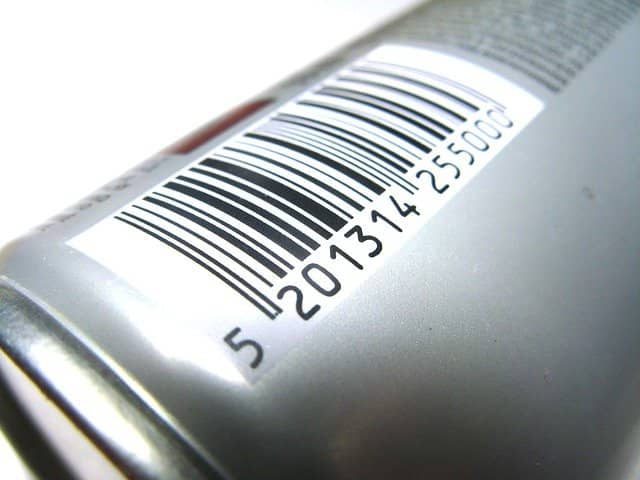
7. European Article Number – EAN
EAN or “European Article Number” is the EU version of the UPC, but instead of 12, it contains 13 digits.
Generally speaking, almost all PoS that read UPCs should be able to read EAN barcodes.
You can take a look at this EAN vs. UPC guide to learn more about their differences.
8. Bill Of Lading – BOL
Historically, the term “Bill Of Lading” was used only in sea freight, to describe a document issued by the carrier (transport company) that confirms the receiving of the shipment and outlines its contents.
Today, a BOL is used in all types of international shipping methods and it acts as a receipt or a contract between the shipper (carrier) and you – the owner of the goods.
9. Bill Of Materials – BOM
The best way to understand the BOM or Bill Of Materials is to think of it as a document or a list of all the necessary raw materials, parts, and other items for building your finished product.
10. Warehouse Management System – WMS
A “Warehouse Management System” or WMS is software or a tool that helps control and oversee different warehouse operations.
Typically, this software includes functions like inventory management, order fulfillment, returns management, warehouse distribution, etc.
11. Original Equipment Manufacturing – OEM
OEM stands for “Original Equipment Manufacturing” and it describes the process of sourcing a product from manufacturers with an original design that’s built just for your business.
With OEM, the manufacturer can produce an entirely original product based on the buyer’s specifications.

12. Original Design Manufacturing – ODM
ODM is an abbreviation for “Original Design Manufacturing”, and unlike OEM, it only allows buyers to customize certain aspects of their products.
So, with OEM, you (the buyer) would order generic products that the manufacturer produces in general, and add a logo, change the color, and similar details.
Here’s a guide to OEM vs. ODM to learn more.
13. Key Performance Indicator – KPI
KPIs or Key Performance Indicators are metrics that a business measures to quantify the progress of goals and achievements.
In logistics and eCommerce, these KPIs could be:
- CPA – Cost Per Acquisition
- CTR – Click-Through Rate
- CLV – Customer Lifetime Value
- AOV – Average Order Value
- CPC – Cost Per Click
There are no right or wrong KPIs to measure. It all depends on your business model and the areas you’re analyzing and trying to improve.
14. Application Programming Interface – API
API or “Application Programming Interface” is a set of functions that allows two (or more) programs or software to receive information from each other and work in sync.
15. Full Container Load – FCL
FCL or “Full Container Load” is a shipping term used to describe an importer who pays for an entire 20 or 40ft. container for their order.
Usually, this is done for orders that fill an entire container, although you can also pay for an FCL shipment if your order doesn’t fill it but you just want your goods to not be mixed with someone else’s during transport.
16. Less than a Container Load – LCL
LCL is an abbreviation for “Less than a Container Load” and it’s a shipping term commonly used to refer to transporting goods that don’t fill a full 20ft or 40ft container.
With an LCL shipment, you practically share container space with other buyers.
17. Full Truckload – FTL
FTL or “Full Truckload” is the road freight equivalent of “Full Container Load” in sea freight. It simply means transporting goods that fill an entire truck or paying for an entire truckload for your goods.
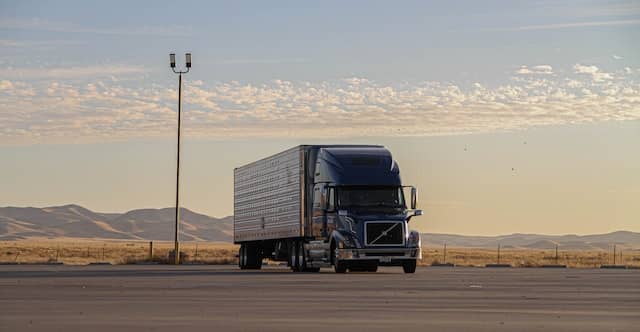
18. Less than a Truckload – LTL
LTL stands for “Less than a Truckload” and it’s a road freight term that usually means an importer doesn’t have enough order volume to fill a truck so they share the space with other importers.
19. Cost, Insurance, and Freight – CIF
CIF is a shipping Incoterm that stands for “Cost, Insurance, and Freight”. As the name suggests, this incoterm is used for sea freight and it means the seller is responsible for covering the cost, insurance, and freight.
Here’s a practical guide to CIF Incoterms for more details.
20. Free On Board – FOB
FOB or “Free On Board” is a shipping Incoterm used to describe a contract under which the seller or exporter carries a responsibility only until loading the goods on the vessel. After that, the costs and obligations transfer to the buyer.
To learn more, check out this guide to FOB Incoterms.
21. Ex Works – EXW
EXW Incoterms are used when the seller is responsible only for providing the goods for pickup at a designated location such as their warehouse or factory. This Incoterm places the least responsibility on the seller and the most on the buyer. Naturally, the buyer overtakes the majority of the risks associated as well.
Learn more in this EXW vs. FOB guide.
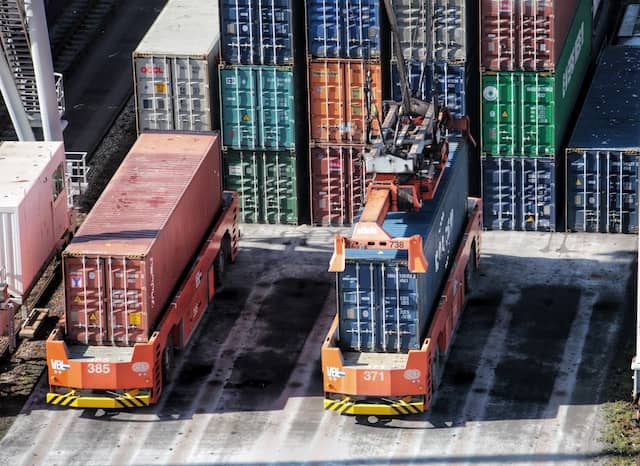
22. Delivered Duty Paid – DDP
DDP or “Delivered Duty Paid” are shipping Incoterms that entail that the seller takes care of delivering the cargo and paying the import cost once it arrives at the destination port.
Here’s a guide to DDP Incoterms for more in-depth information.
23. Delivered Duty Unpaid – DDU
Contrary to DDP, DDU stands for “Delivered Duty Unpaid”, and it signifies that the seller is responsible for the shipping up until the importing process. The buyer takes over the import obligations and costs.
Learn more in this DDP vs. DDU guide.
24. Value Added Tax – VAT
VAT is used in the EU and it’s similar to the US sales tax. For instance, VAT is also added to the ultimate retail price paid by the consumer.
However, unlike the sales tax that’s paid once at PoS, VAT drags through all stages of the supply chain, each time a product is resold.
25. Business To Business – B2B
A B2B or “Business To Business” model simply refers to a business whose target buyers are other businesses instead of individuals.
These types of businesses are often wholesalers that sell in bulk to smaller retailers. Or, they can be SaaS (Software as a Service) enterprise businesses that cater to organizations and companies.
26. Business To Customer – B2C
Contrary to B2B, B2C stands for “Business to Customer” and this business model targets individual persons as buyers. B2C businesses usually have no (or low) MOQs and they market directly to end consumers.
27. Direct To Consumer – DTC
A DTC or D2C business model stands for “Direct To Consumer”. This is a concept where businesses skip the middlemen seller; instead, they market and fulfill orders directly to end buyers.
28. Consumer Packaged Goods – CPG
“Consumer Packaged Goods” or CPG are also known as fast-moving consumer goods. These are products that buyers use frequently and have to replenish regularly, such as food, beverages, cosmetics, etc.

29. Assembled To Order – ATO
The logistics abbreviation ATO stands for “Assembled To Order”. This is a business model where parts of the product are pre-assembled but the entire product is not. Instead, it gets assembled quickly only after a buyer places an order.
ATO products usually allow for customization and personalization, making this business model great for businesses that can implement it. Plus, it promotes less waste since products are finalized only after they’re bought, which means less dead stock on your hands.
30. Minimum Order Quantity – MOQ
The MOQ of a product is the minimum number of units that a seller agrees to sell to a buyer. For example, many sellers choose wholesales as a business model if they sell low-ticket items. In these instances, it’s the quantity that matters to making profits.
So, these products might have higher MOQs since they need volume.
31. Proof Of Delivery – POD
Next, we have the logistics abbreviation POD which stands for “Proof Of Delivery”. This is a document that confirms that the recipient (the buyer) has received the product sent by the sender (the seller).
32. Port Of Entry – POE
POE or “Port Of Entry” is the designated port or location where products can legally enter a country and the importing procedure occurs.
33. Point Of Sale – POS
A “Point Of Sale” or POS is the place where the transaction occurred. In brick-and-mortar stores, this is typically the cashier at checkout. For eCommerce stores, the POS is the cart or your online store.
34. Customer Relationship Management – CRM
CRM software or a CRM tool is a database where a business stores and manages all its client or customer accounts. These accounts can be potential leads, existing, or past clients.
Typically, the CRM will store details such as contact information, purchase history, demographics, platform, etc.
35. Cost Of Goods Sold – COGS
COGS or “Cost Of Goods Sold” is an abbreviation used to describe the total expense of a business when manufacturing a product. COGS includes the cost of raw materials, production, labor, warehousing, and all other expenses necessary for building a ready product to sell.
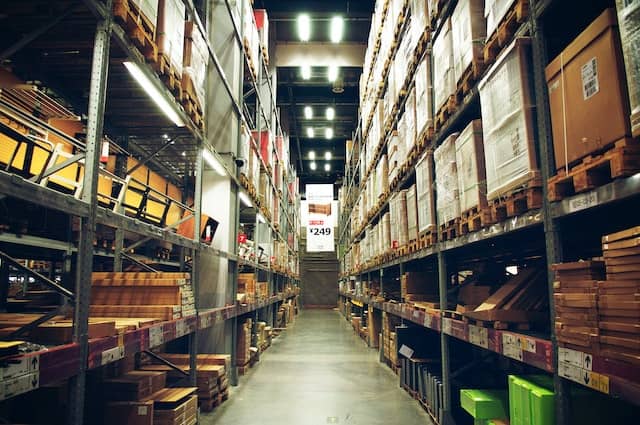
36. Estimated Time of Arrival – ETA
In logistics, ETA or “Estimated Time of Arrival” usually refers to the time a product or an order is supposed to arrive at the designated destination.
37. Estimated Time of Departure – ETD
The ETD or “Estimated Time of Departure” refers to the time a carrier is expected to depart to its destination.
In terms of eCommerce, this will represent the date and time of the departure of your order, allowing you to calculate the shipping time and estimate the delivery date.
38. Standard Operating Procedure – SOP
SOPs are typically step-by-step instructions on specific logistics procedures or operations. This can be warehouse picking, packaging, vehicle loading, stock reordering, etc.
39. Radio Frequency Identification – RFID
RFID tags are scannable devices that allow you to access electronically-stored data using an electromagnetic reader. RFID technology is a revolution in barcode scanning and makes identifying and tracking products much easier.
40. Enterprise Resource Planning – ERP
ERP is an abbreviation that refers to software used for managing different business aspects including warehousing, finances, supply chain, etc. Examples of ERP systems are Oracle, SAP, IFS, etc.
41. Electronic Data Interchange – EDI
EDI or “Electronic Data Interchange” simply refers to the automated data transfer between two or more systems. In logistics, EDI is used in connection to ERP systems and WMS.
42. Cash On Delivery – COD
COD or “Cash On Delivery” is essentially a payment method where the buyer pays cash to the delivery person that brings the order to their doorstep.
In many countries, COD is one of the most popular ways to pay thanks to the feeling of safety that buyers get from seeing the product before paying.

43. Air Waybill – AWB
The Air Waybill or AWB is similar to the Bill of Lading in sea freight, only for air freight. It’s a document issued by carriers that serves as a receipt that the stock has been received.
44. Harmonized Tariff Schedule – HTS
HTS and HS stand for “Harmonized Tariff Schedule” or “Harmonized System”, respectively. We’re talking about product classification codes used in international trade for the calculation of taxes and duties, based on the products’ categories, materials, features, etc.
45. International Organization for Standardization – ISO
ISO is an international standard-setting nongovernmental organization comprised of representatives from over 160 countries globally.
46. Return On Investment – ROI
ROI or “Return On Investment” is a logistics abbreviation and metric used to measure the profitability of a project (an investment).
47. Transportation Management System – TMS
A TMS is a logistics software used to optimize the freight process, reduce freight expenses, and design efficient incoming and outgoing freight routes.
48. Cubic Meter – CBM
The CBM abbreviation signifies “Cubic Meter”, which is a measurement you’ll often need to calculate the volume of your product which will affect your warehousing and shipping fees.
Take a look at this guide to CBM in shipping to learn more about this logistics term.
49. Fulfilled By Amazon – FBA
Amazon FBA is a well-known and popular business model among eCommerce entrepreneurs. Simply put, FBA stands for “Fulfilled By Amazon”, and just as it sounds like, it means shipping your bulk products to Amazon FBA warehouses and having Amazon fulfill orders to your end buyers.
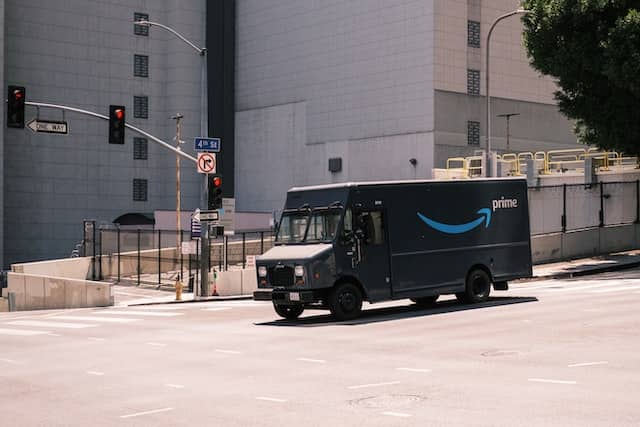
50. Fulfilled By Merchant – FBM
Lastly, we have the abbreviation FBM which stands for “Fulfilled By Merchant”. This is the opposite of the FBA model we described in point 49 above.
FBM is a model where you sell on the Amazon marketplace but deal with inventory storage, order fulfillment, and shipping on your own, without the help of Amazon.
Check out this FBA vs. FBM guide for comparing the two business models.
FAQs about Logistics Abbreviations
Finally, let’s go over a couple of frequently asked questions on the subject of logistics terms and abbreviations:
What Does HS Stand For in Logistics?
HS in logistics stands for “Harmonized System” or more precisely “Harmonized Commodity Description and Coding System”. It represents a list of numbers (codes) used to classify different products based on their categories and properties.
What Does CTN Stand For in Logistics?
CTN stands for “Cargo Tracking Note” and it’s a marine document containing information about the cargo’s movement from port to port.
What Are Some Common Abbreviations in Logistics?
All of the 50 logistics abbreviations we mentioned above are commonly used in eCommerce and brick-and-mortar businesses. Since the logistics industry is a broad area, the complete list of these abbreviations and acronyms would be endless.
So, if you need something more specific, don’t hesitate to reach out or use Google at your convenience.
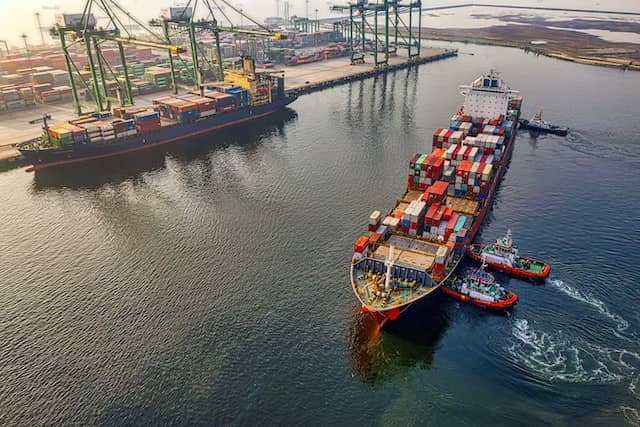
Summary
If you need logistics services for your business, such as product sourcing, order fulfillment, inventory storage, or shipping, get in touch! We offer a free quote service allowing you to test our services with zero obligations!
Hopefully, this list of essential logistics abbreviations will turn you into a better seller and a savvy entrepreneur!
